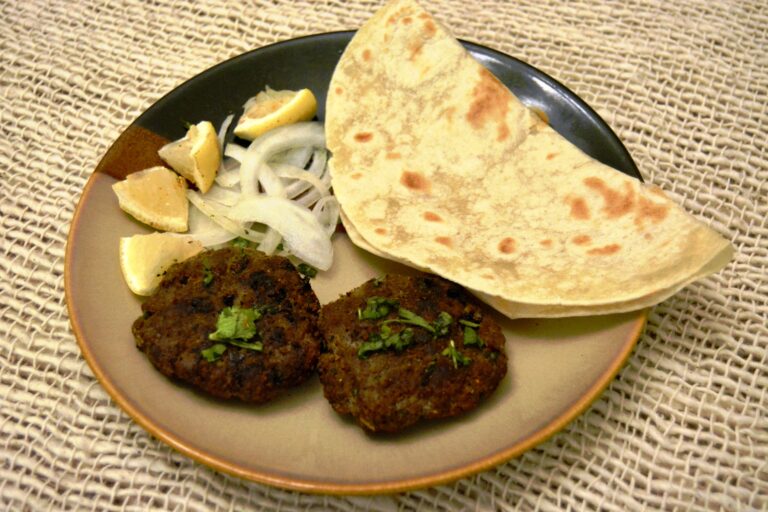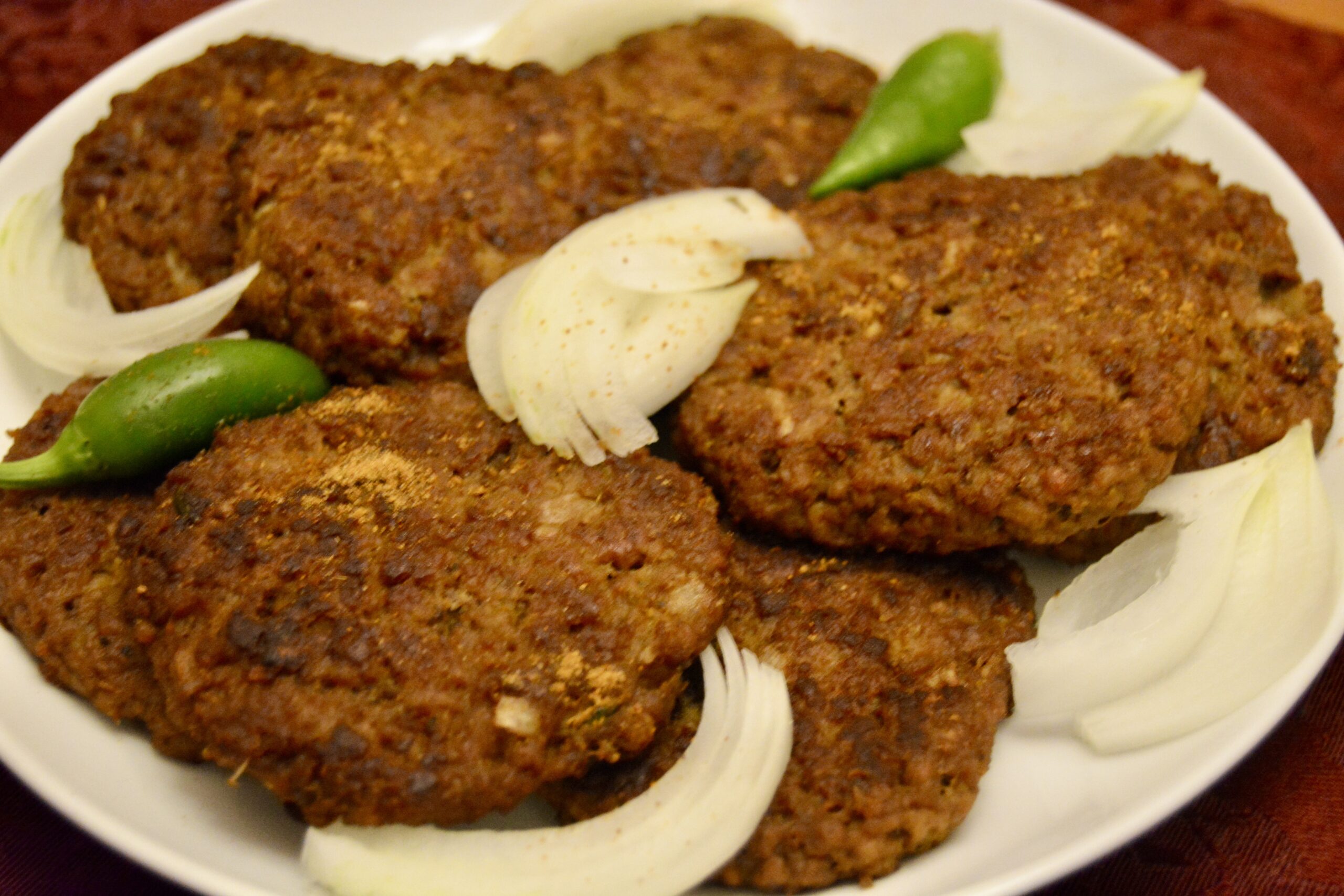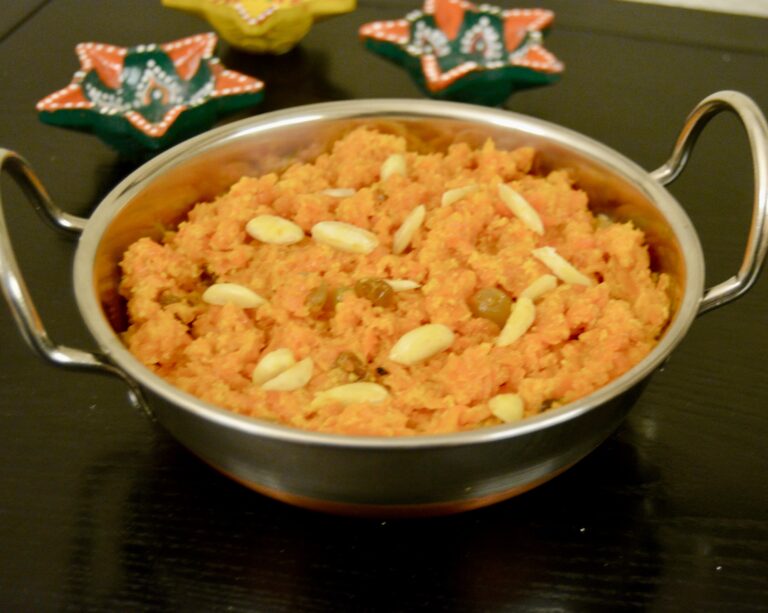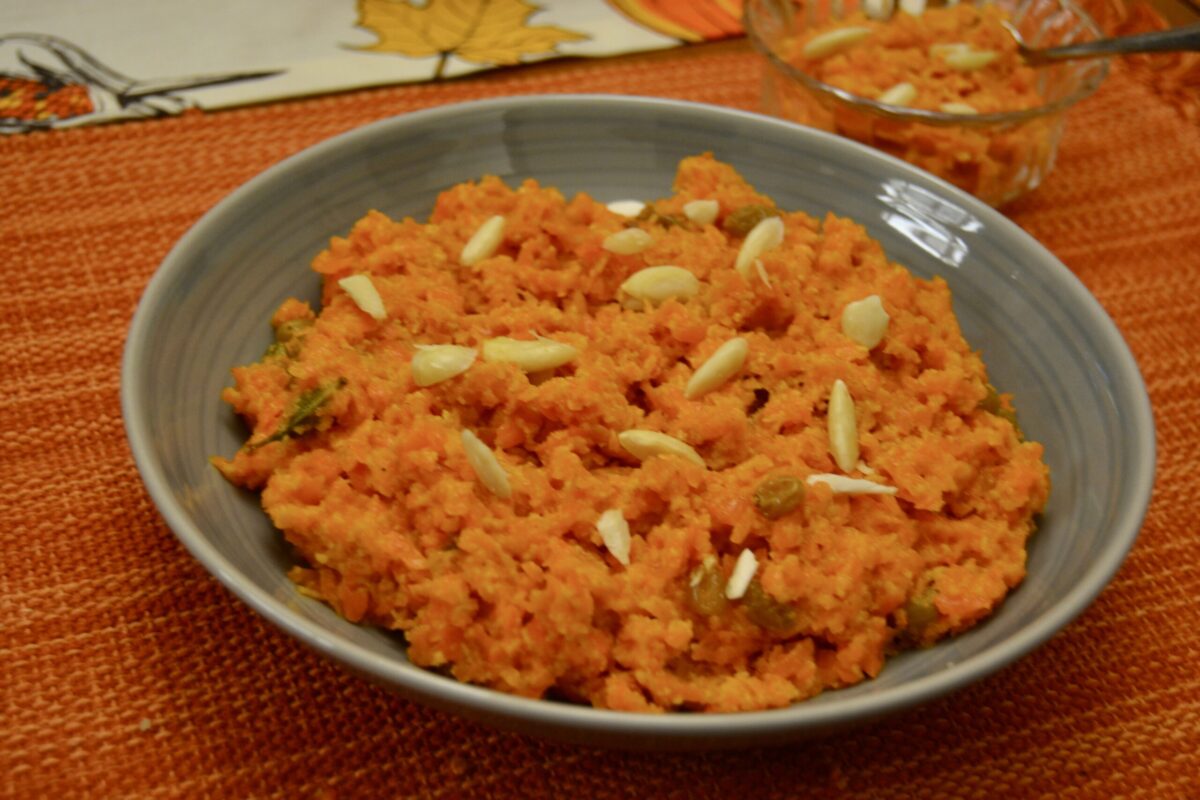A favorite memory: It is a hot summer’s day. This particular evening, Aunty Sheila has invited us to her place for a party. It is always fun to visit her, as we kids on both sides of the family are around the same age and have a great time together. Aunty has a warm, bubbly personality and throws great parties. Her place is not too far from ours, so, giggling and laughing, we girls walk over, we love walking—even in the heat of the day.
Hot and starting to perspire by the time we get there, our eyes light up as we see that Aunty has already set up an outdoor table of party fare. In the center is a large tray with a giant watermelon propped securely on it. Around the watermelon are other delicious treats. She greets us with her usual big smile and hug and tells us to help ourselves to some watermelon juice. We happily walk across the lawn to the table. The top quarter of the melon has been sliced out, and we peer into the cut melon. The fruit inside has been carefully carved out and then blended with cold black tea and lemonade. Chunks of melon still float around for those who want to eat the fruit. We thirstily gulp down the Watermelon Tea Cooler and help ourselves to more. The drink is so cool and refreshing on that Indian hot summer’s day.
Years later, thinking about some of my fun memories of life in India, I decided to try and duplicate the recipe. I enjoy serving this taste of memory to my family and friends who tell me that I have been successful in duplicating the recipe!
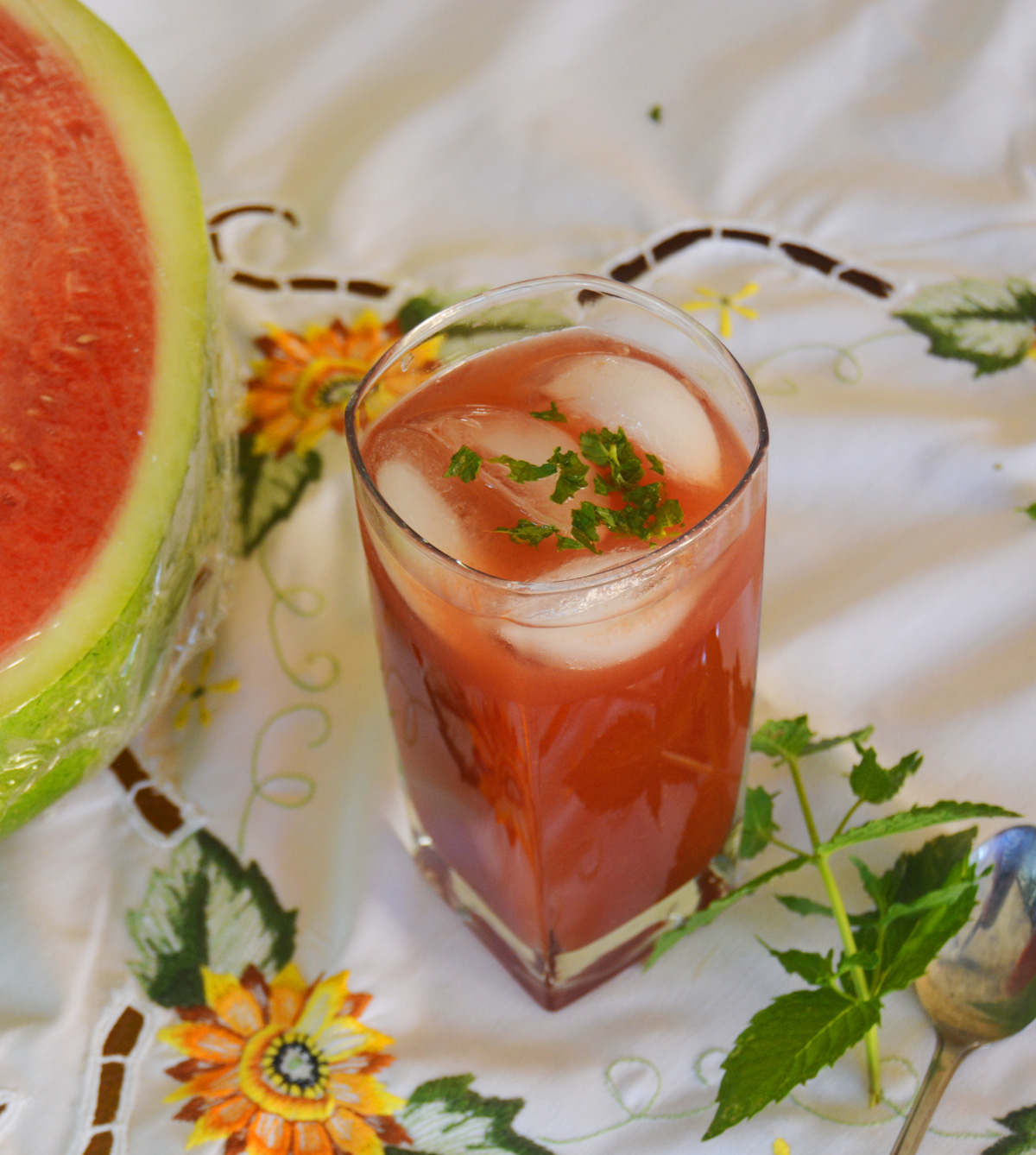
Watermelon Tea Cooler
Ingredients
- 3 tea bags black tea (your choice of brand, caffeinated or decaffeinated)
- 4 cups water
- ½ cup simple syrup (see recipe below)
- ½ cup lime or lemon juice
- 2–3 cups watermelon chunks, seeds removed
- 1 tbsp Chopped mint and lemon or melon wedges for garnish (optional)
Instructions
- Put tea bags in a container that will hold the 3 cups of water. Boil the 3 cups of water, and when they come to a boil, pour the boiling water over the teabags. Let the bags steep for at least 3 minutes. Remove the tea bags and let the tea cool.
- Once cooled, place it in the refrigerator. You can do this a day ahead or a few hours before you are going to make the cooler.
- Blend the watermelon chunks in until it is like a smoothie. In a pitcher that holds at least 6 cups of water, add the tea, simple syrup, lemon juice, and melon smoothie. Stir it all together until nicely mixed. Add some crushed ice when ready to serve.
- If it is too tangy, you can add more crushed ice or cold water.
Notes
½ cup water Directions: 1. In a saucepan, on low heat, dissolve ½ cup of sugar with ½ cup of water (approximately 3 minutes).
2. Take the saucepan off the heat and leave the syrup to cool.
3. When cool, pour the syrup into a clean glass bottle that has a tight lid.
4. Rinse the bottle both with boiling water (do not wipe with a cloth as it may leave bacteria).
5. Refrigerate the syrup until ready to use. It should last a month in the fridge. It should remain a clear liquid. If it turns cloudy, throw it out as that is a sign of bacterial growth!
6. The ratio for simple syrup is one part sugar and one part water so you can always make more to store.
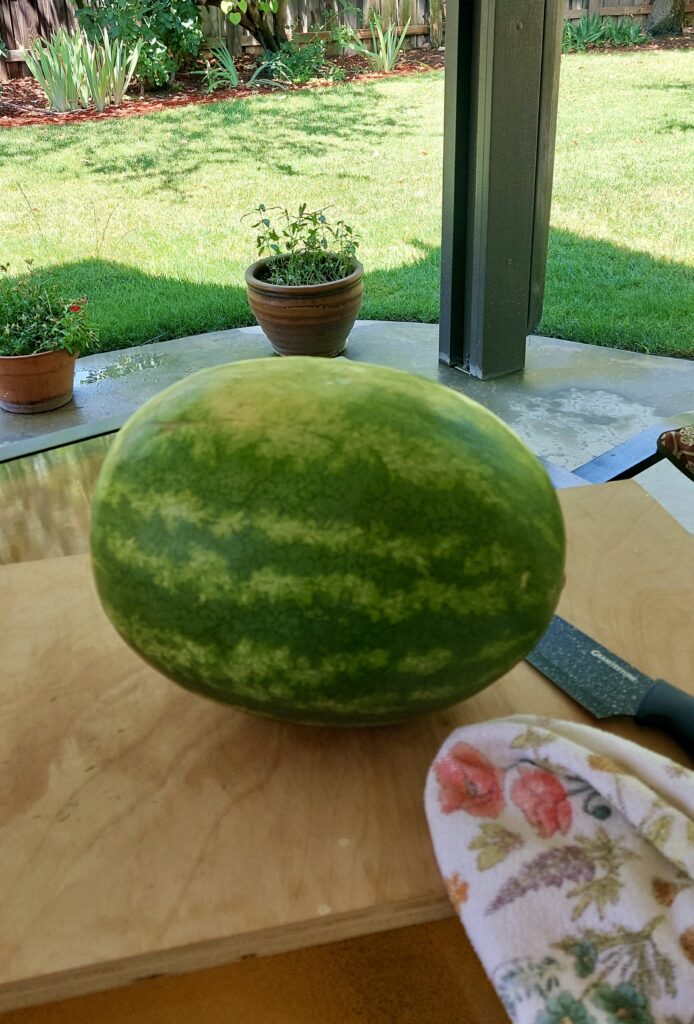

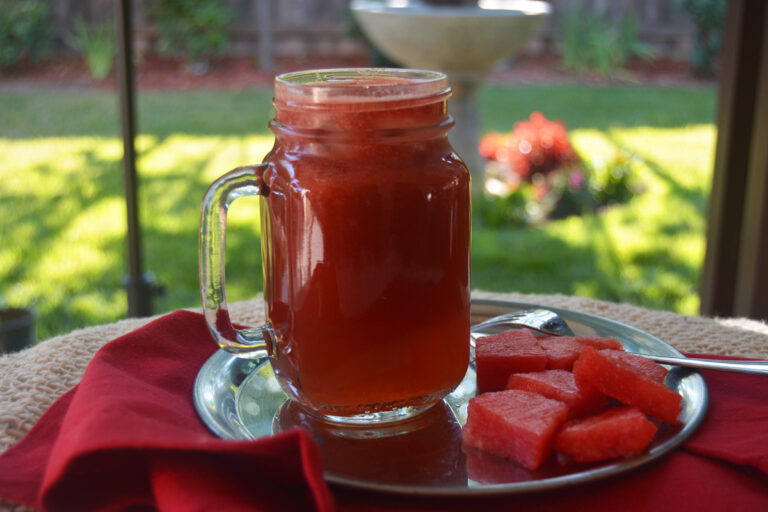
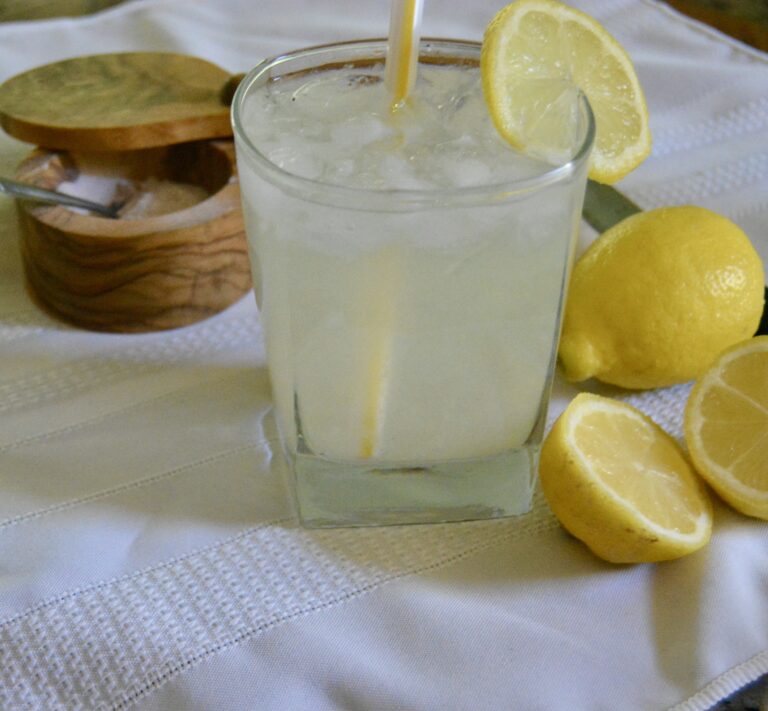
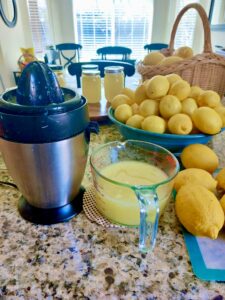 It is a hot summer’s day. I hear Rosy, our cook, fixing lemonade for our son and his friends in the kitchen. The loud spoon clinking against the glass as she vigorously stirs the sugar into the lemon and water mixture reminds me of when we were kids.
It is a hot summer’s day. I hear Rosy, our cook, fixing lemonade for our son and his friends in the kitchen. The loud spoon clinking against the glass as she vigorously stirs the sugar into the lemon and water mixture reminds me of when we were kids.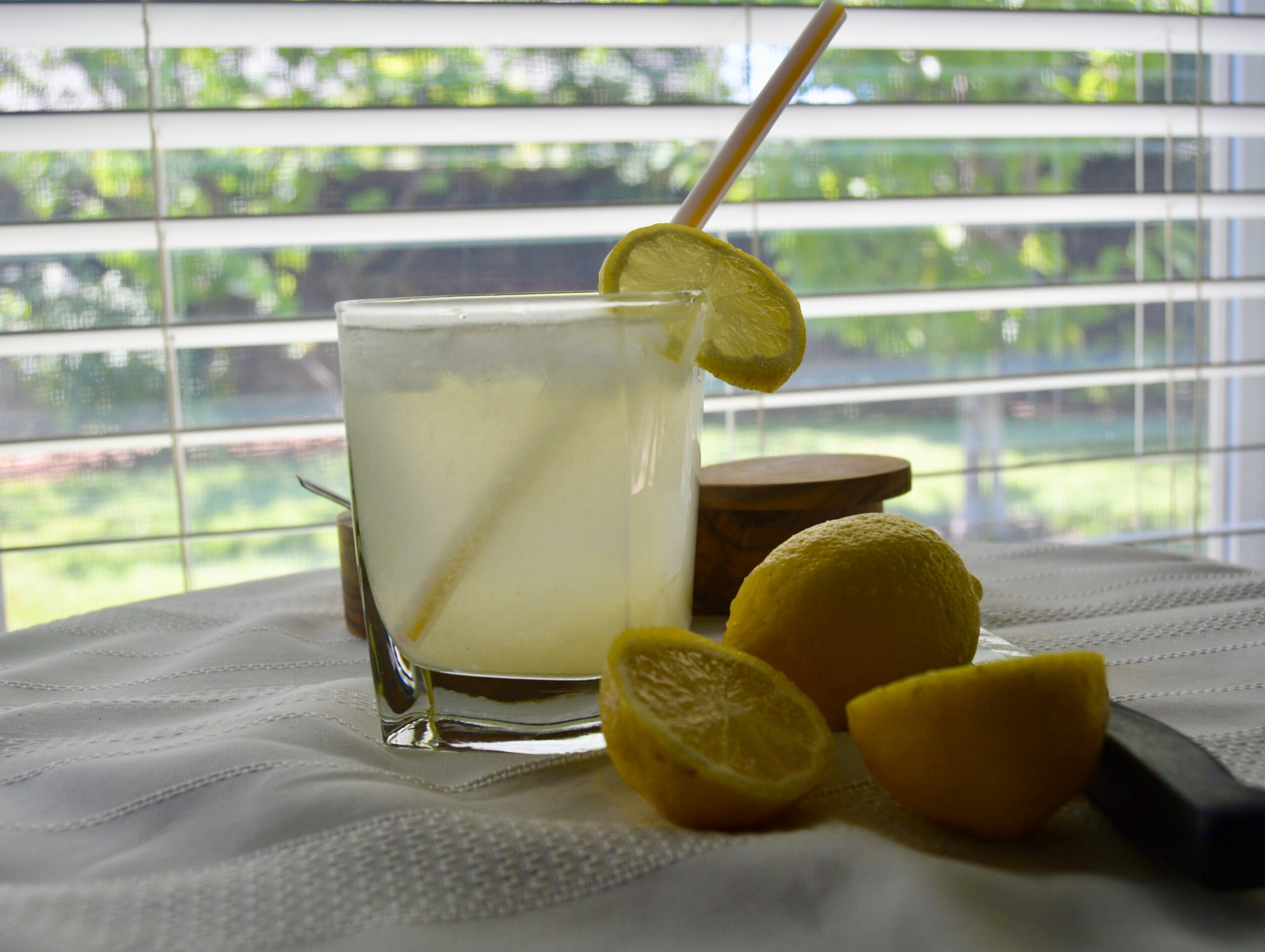
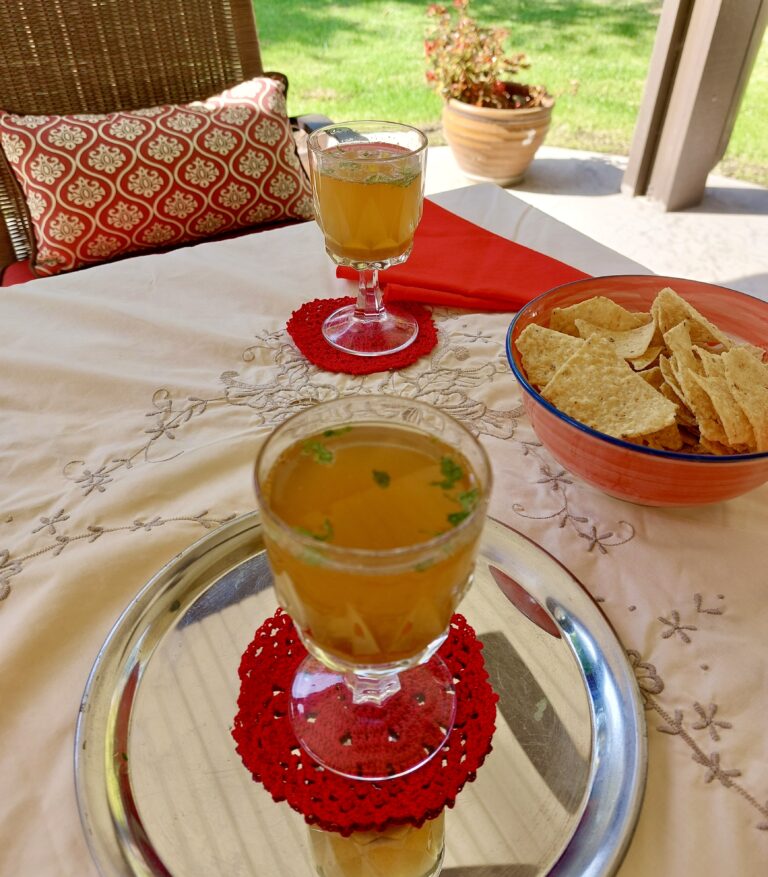
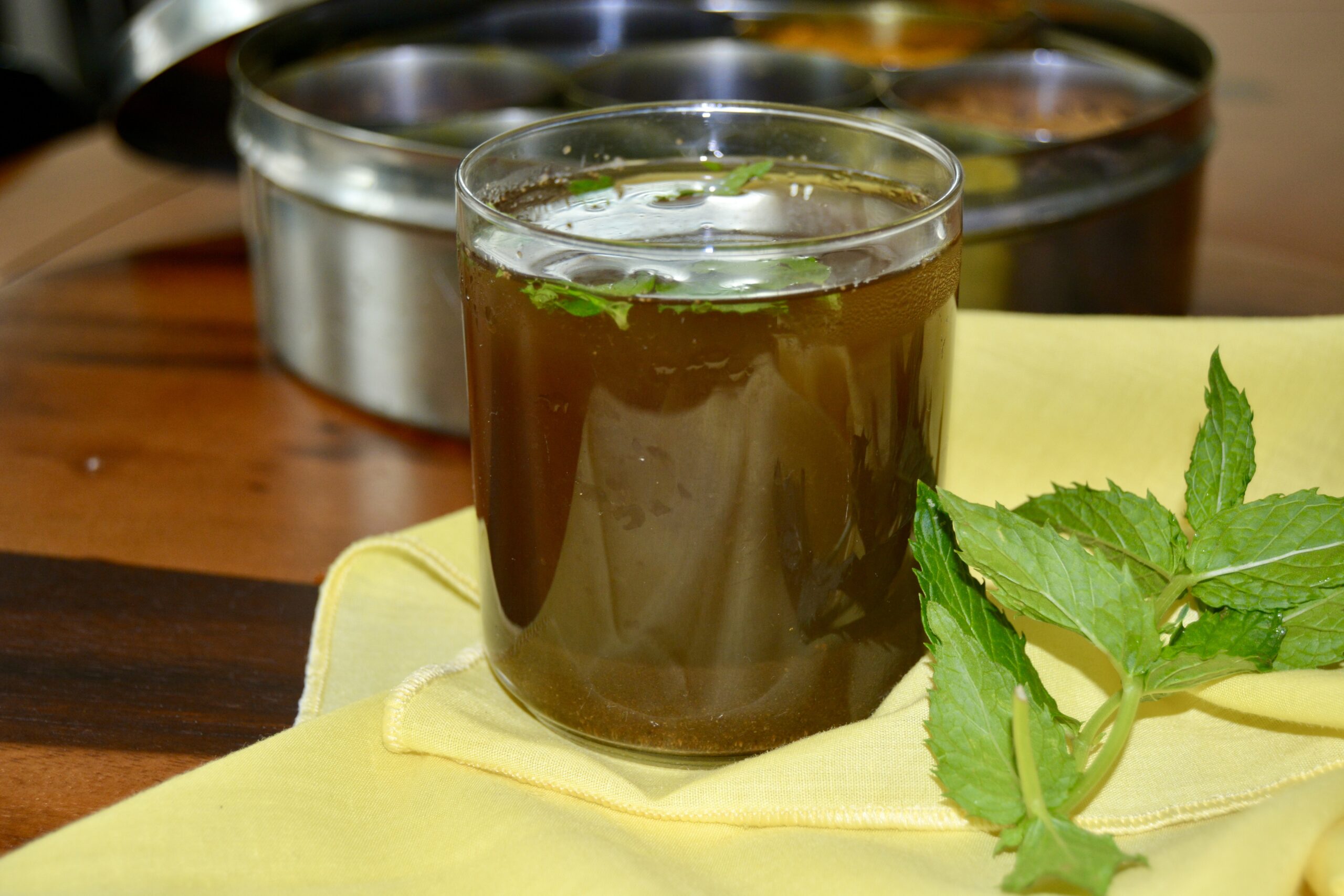
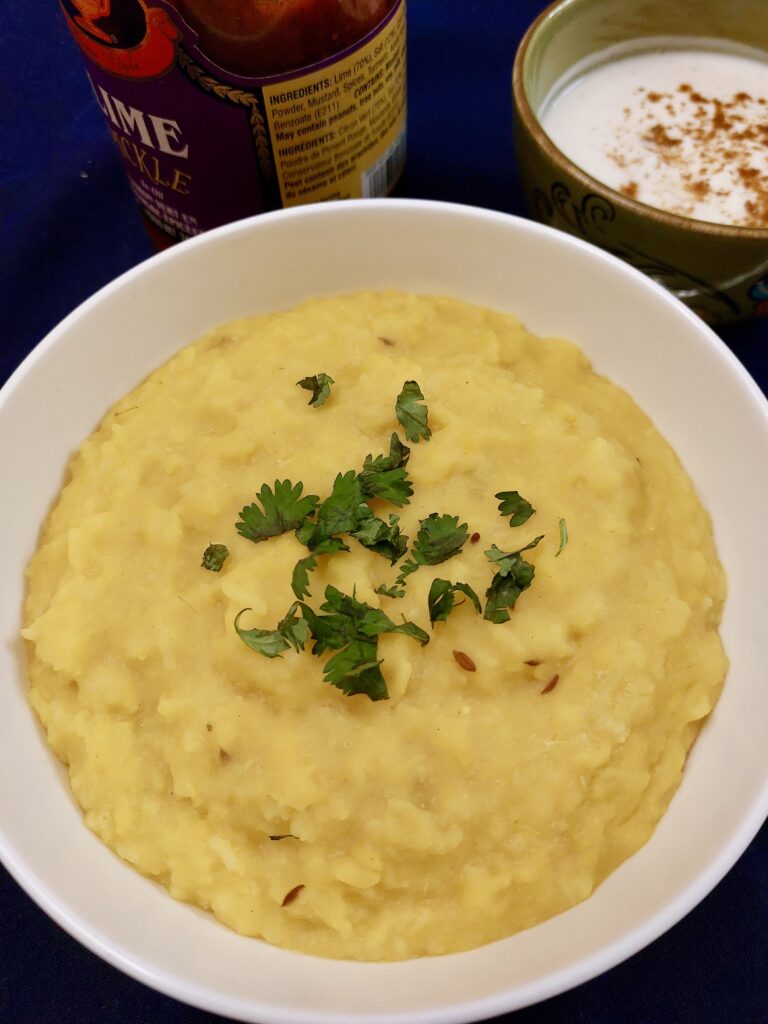
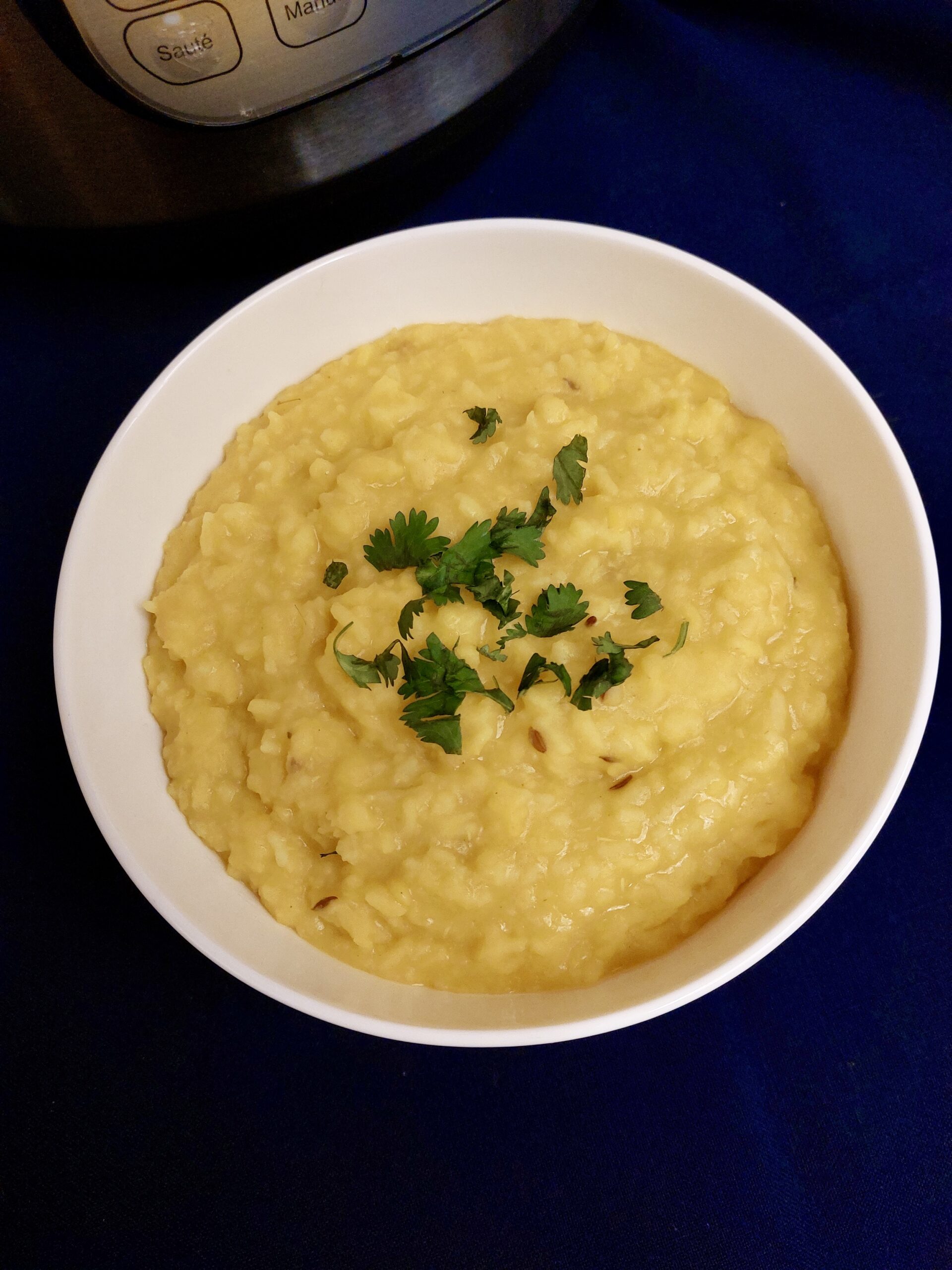
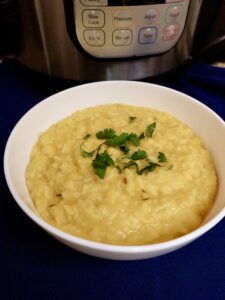 u can start with the tempering, then add all the other ingredients and cook. This works well when using a manual or electrical pressure cooker. Just follow the cooking times on the manual and reduce the water to 3 cups.
u can start with the tempering, then add all the other ingredients and cook. This works well when using a manual or electrical pressure cooker. Just follow the cooking times on the manual and reduce the water to 3 cups.